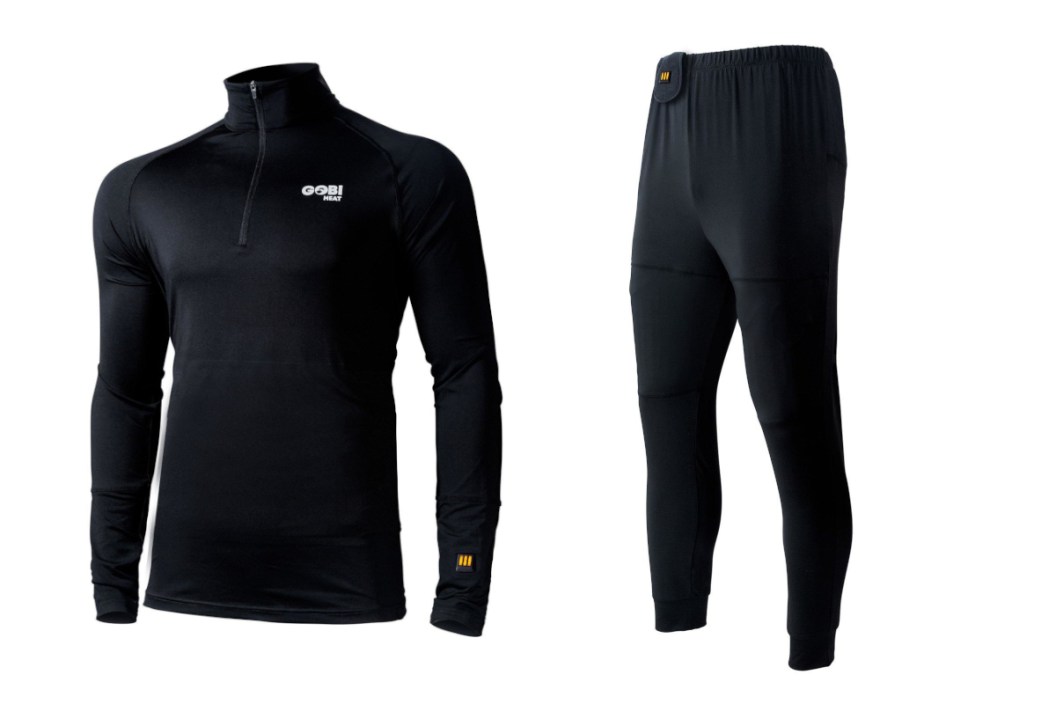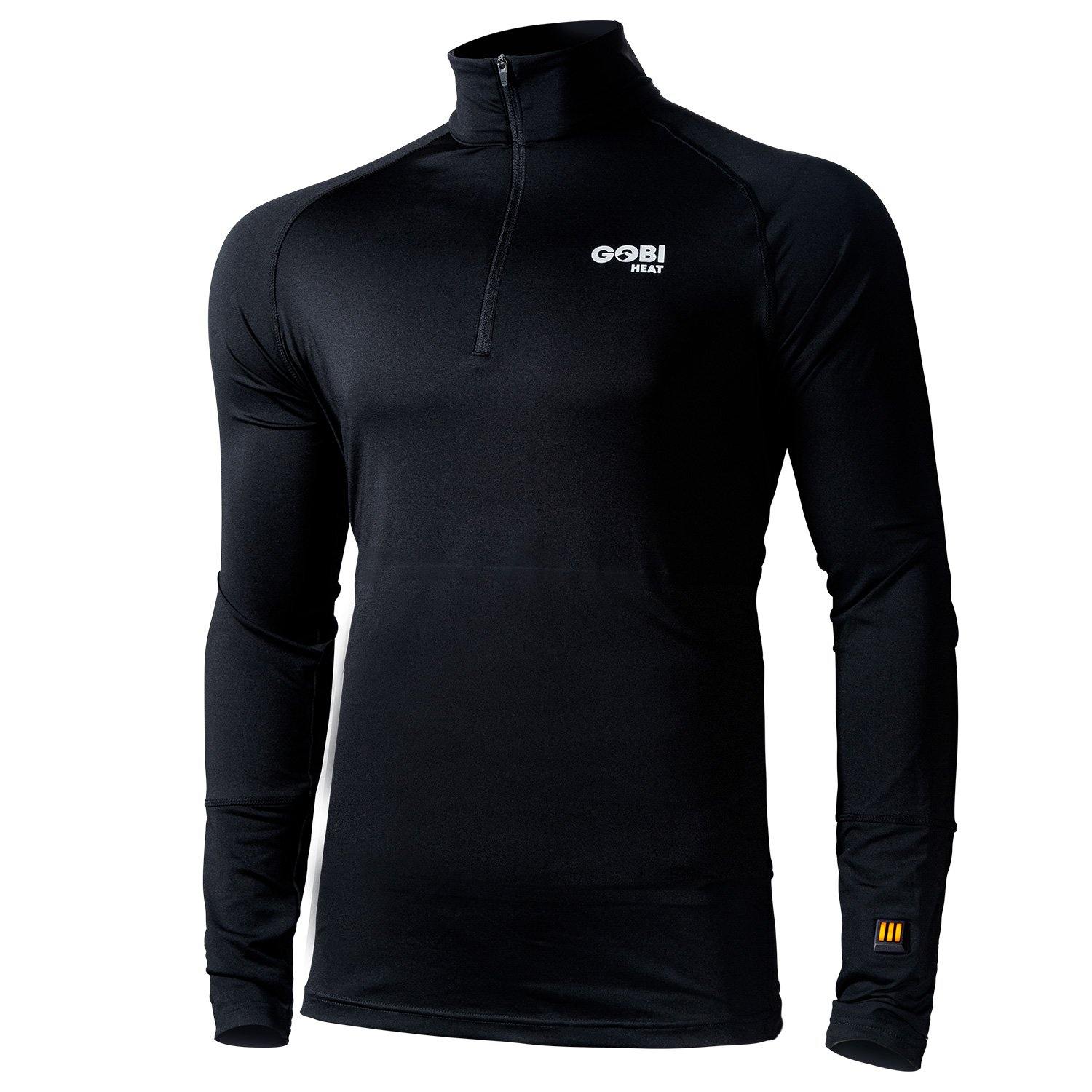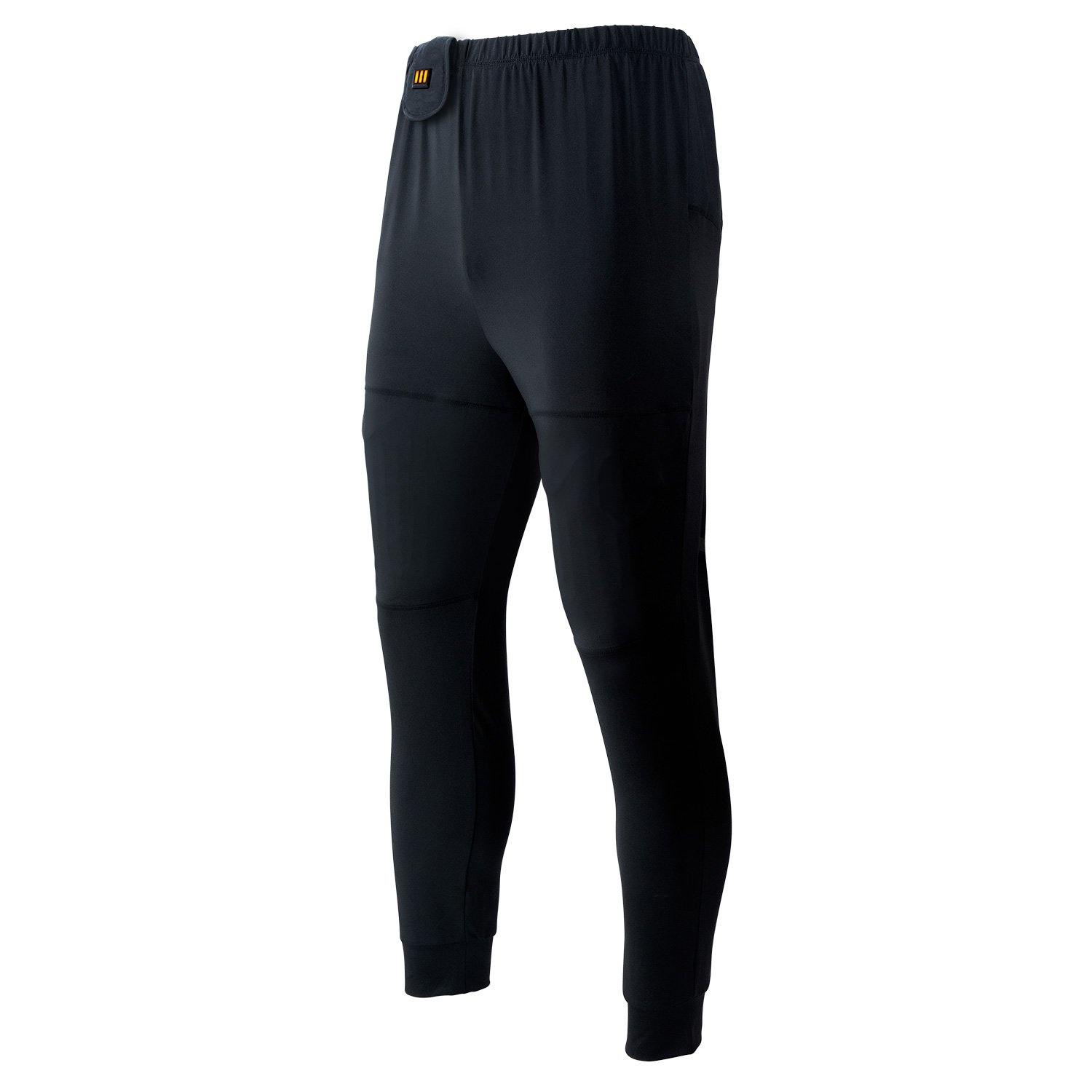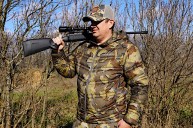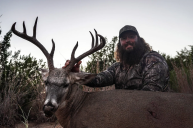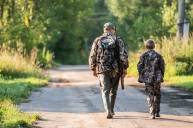Gobi Heat's baselayers kept me toasty during some cold Michigan weather.
If you love the outdoors, it's likely you've spent some time trying to figure out ways to cope with the cold. I know I've had my share over the years while hunting Michigan's deer seasons in November and December. My past attempts to stay warm usually involved using multiple layers of sweaters and long underwear.
This year, I got the chance to test Gobi Heat's Basecamp heated base layer shirt and pants. Featuring electronic heat, these layers, combined with some down hunting jackets and pants, helped me conquer the cold this season.
Mostly because it offers hours of heat using just a few small battery packs. While I used these baselayers while hunting, they should work great for ice fishing, skiing, and snowboarding, hiking, and tons of other outdoor activities you may normally give up once the cold starts to set in each year.
Gobi's heated Basecamp base layer pants and shirt.
Gobi's heating technology is much like something you'd find in an electric blanket or other form of heated fabric. The main material is a polyester/spandex blend. The thing that makes the layers so warm is their conductive thread heating elements. The shirt has three heating zones. The first is in the abdomen, the second is in the upper back, and the final is in the neck.
For the pants, there are four heat zones. Two of them are in the thigh area while the other two are in the glutes. These zones are strategically placed to ward off cold spots one might normally experience. I also suffer from some slight chronic pain around my abdomen from a car accident years ago. Pain that often gets aggravated when I get cold. The abdominal portion of the shirt layer was incredibly soothing on these areas and helped keep me comfortable during some long sits in the treestand.
The heat portions of these baselayers operate via a push button system on the left sleeve. On the pants it's a small flap extending from the waistband. There are three bars on the button to indicate the three heat settings: low, medium, and high. More on that in a minute. I did appreciate Gobi built this heat system to only turn on or off after holding the button down for three seconds. It helps to ensure you don't turn it on by accident while in storage or when you don't need it. A simple tap either increases or decreases the warmth of this heated clothing after that. A lighted LED helps indicate when the system is on, although you'll be able to feel it quickly once booted up.
The heating systems are powered by a 5-volt, 10,000 mAh lithium-polymer battery. Gobi includes chargers with each half. The batteries do take a while to charge. However, for most of my hunting I plugged them in after the evening's hunt and they were ready to go the next morning. The rechargeable battery connects via a system of USB-C plugs that are stealthily hidden in the pockets. These pockets seal up using some nice YKK zippers so you do not have to worry about the battery falling out while doing more physical activities like skiing.
Gobi says you can expect about 9.5 hours of battery life on low heat, which sounds about right for what I experienced while hunting. However, I found the medium and high levels drained the batteries slightly faster than the claims of 6.5 and five hours. Which is not really a big deal, it was more than enough heat for most of my hunts. If you are going to hunt all day, the low setting should see most hunters through. For most people, they're probably not going to need more than five hours anyway. For me, cranking up the pants past the low setting was too much heat in that area. Although I did usually crank up the shirt portion because I could handle more in my torso. Your mileage
Hunting with Gobi Heat Baselayers.
Probably the best part about these baselayers is the fact I didn't need a lot of extra hoodies and sweaters like I have traditionally used while hunting. In most cases, I literally only worse the baselayers and one light sweater and pants under my outer layers, which were down-insulated, ultralight pants and a jacket. Not once did I get chilled or shiver while I was hunting in temperatures that dipped down into the 20s and 30s this year.
I also used the base layers on a pheasant hunting trip in South Dakota where the temperatures stayed around 50 degrees. On that trip I didn't turn on the heating elements because they were not needed and quickly found the layers work quite well on their own. The layers were extremely comfortable as I put on more than 10,000 steps walking the fields following dogs trying to flush birds. Because of that experience, I can easily recommend these to farmers, ranchers, or construction workers who spend long hours in the cold each winter. I will probably utilize these layers for hiking, and early season fishing.
Because I was so comfortable, I was able to spend more time focusing on spotting deer, and less time worrying about how cold I was at the time. This system will help you enjoy more of the activities you love when the weather outside starts to get frightful. By the time I'd wrapped up hunting, I was left wondering how I'd gotten along without baselayers like this in the past.
The bottom line.
If you are serious about staying warm during your cold weather adventures, the Gobi Heat baselayers are a good way to do it. I can see myself using these not just for hunting, but also for camping, fishing, going to cold weather football games, and even for sleeping on a particularly cold winter night. There's a lot of versatility to be found with these layers. Personally, I'm wondering how I got through Michigan's cold weather without them at this point. See the Gobi Heat website for their full line of heated gloves, heated socks, jackets, chairs, and more.
Products featured on Wide Open Spaces are independently selected by our editors. However, when you buy something through our links, we may earn a commission.
For more outdoor content from Travis Smola, be sure to follow him on Twitter and check out his Geocaching and Outdoors with Travis YouTube channels.
NEXT: THE AXIS DEER AND HOW THEY'RE IMPACTING PARTS OF THE UNITED STATES
WATCH
